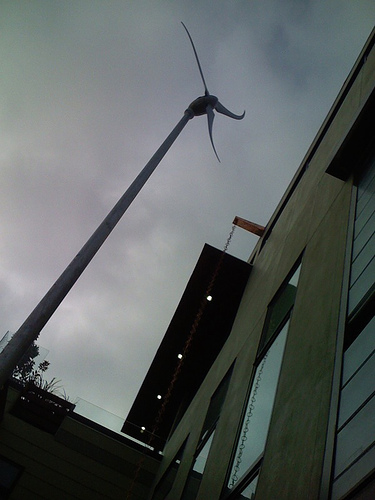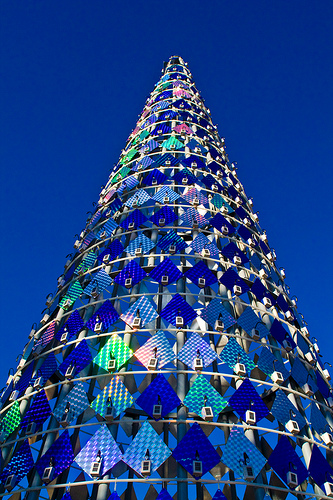Energy Report
Energy harvesting technology is constantly trialled and monitored across the EBD.

We now produce more energy (electricity and bio-gas) than we consume, through our varied technologies across the district and our investments beyond these boundaries. EBD’s energy cooperative “Switch” now makes a good income from electricity feed into the grid, managing the array of electricity-producing systems on the site like a power-plant.
In the initial development of EBD, the partners invested in renewable technology as a way of offsetting their carbon contributions. They established Switch as a local agency. Switch’s energy assets include EBD onsite renewable technologies and also an offsite wind farm. The wind farm was established as a new partnership between one of the existing community wind farms and the EBD developers. Once the site was established, these shares were sold, largely to the residents who become members of the Switch cooperative. Switch was seen as a great way to get people to cut down on the amount of electricity they used; quite simply the more electricity that the community saved the more income the cooperative earned.

Through real-time monitoring and feedback systems, individuals have been able to change and reduce their electricity consumption. Further reductions were gained with the help of CURRENTCY, an enterprise that provides low consumption energy consultancy for the EBD community and also for many businesses and residents in the rest of Melbourne.Solar access is of great importance in the physical shape of the site. EDB was carefully designed for maximum collection of solar energy, whilst protecting solar access for community well-being and food production. Currently we produce approximately 17mWh per day from solar panels on site. Many of the early solar cells have been replaced with higher efficiency ones. Recent breakthroughs in solar technology will significantly boost the efficiency of these system and allow energy to be collected from more unconventional surfaces. Some excess electricity is stored on site, another investment by Switch.
Wind power is only a minor source of EBD’s energy production, as wind turbulence in this part of Melbourne results in unpredictable energy generation. The energy lab at ACUR has developed new turbines and funnel systems that are more suited to EBD’s variable wind currents. The first of these turbines is being tested on the ACUR rooftop and has created a great deal of public media attention. Testing will soon expand onto additional rooftops throughout the neighbourhood. EBD community members regularly visit the lab as it moves around the district testing these turbines. Other significant energy initiatives include geothermal and water storage, night-purging buildings, the Combined Heat and Power district heating and cooling system, peak-shaving for energy-intensive activities and the wide spread adoption of ‘load limiting’ systems by residents.